




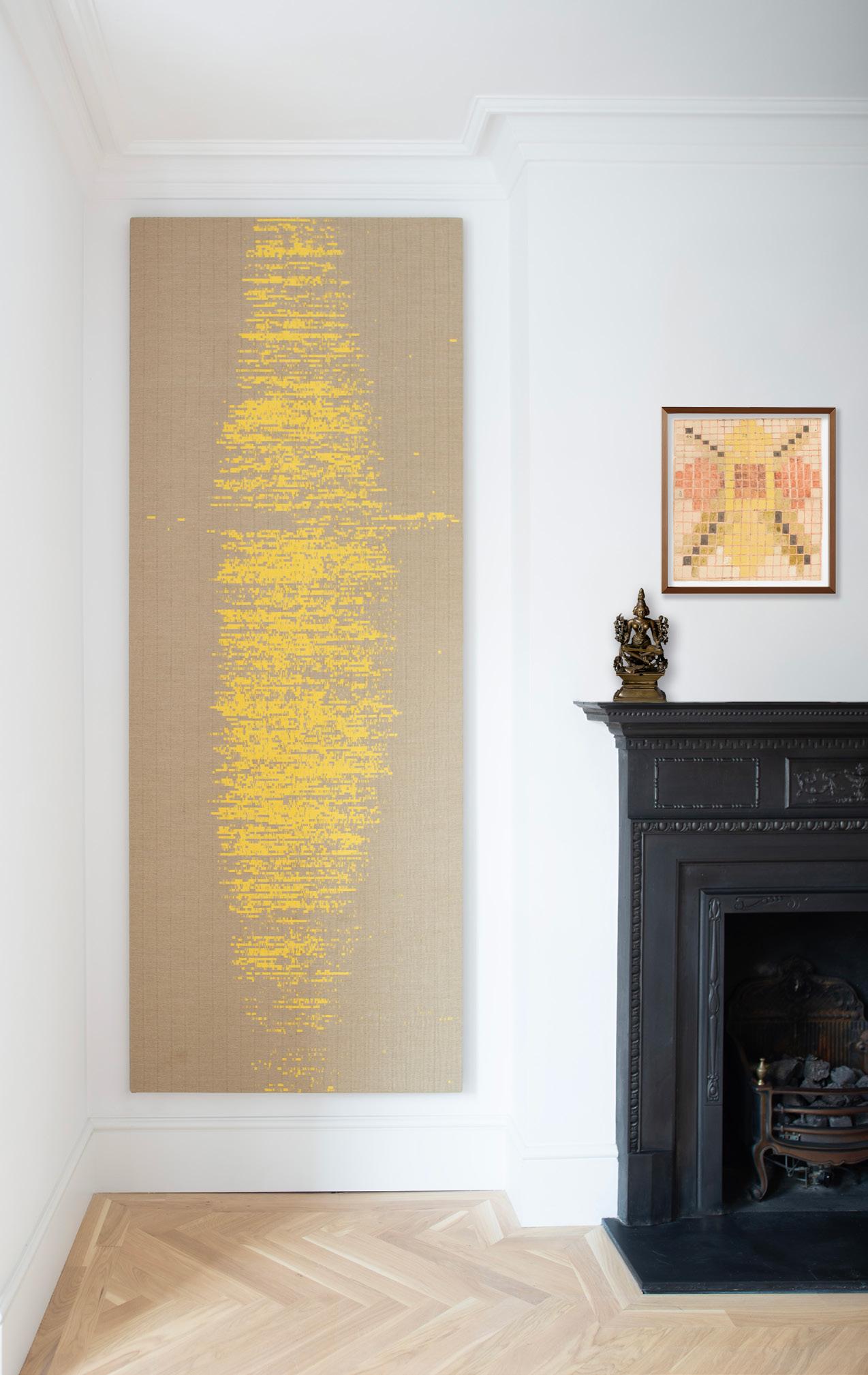
Transcending the boundaries of time and culture, we are pleased to present this selected showcase at this year’s Art Cologne.
Our presentation weaves together ancient philosophies and modern creativity, revisiting the powerful juxtaposition of Tantric art with contemporary works. This evolving narrative, first introduced in previous collaborations, will feature new and distinct voices in the art world, contributing to the ever-growing dialogue between past and present.
For Art Cologne 2024, we are delighted to showcase the works of Stephan Baumkötter, Susan Morris, and Hadi Tabatabai. These three contemporary artists have been invited to create pieces that engage deeply with the spiritual essence of Tantric art. Their contributions reflect the profound influence of Buddhism, Hinduism, Taoism, Jainism, Vajrayana, Bönpo, Ayurveda, and Shamanism on modern artistic practice. Through their works, visitors will witness how these time-honored philosophies continue to inspire and shape the trajectory of contemporary art.
This presentation bridges cultural divides, reframing contemporary art within a spiritually enriched context. This showcase highlights the continued relevance of traditional spiritual practices by offering a fresh perspective on the interplay between ancient wisdom and contemporary artistic expression.
This is an exceptionally large Adhaidvipa, or Jain cosmological map – following a mapping tradition that dates back to the thirteenth century, intended to visualize man’s position within the universe. In Jain cosmology there are three worlds – the upper world (the realm of the gods), a lower world (inhabited by hellish beings) and a ‘middle world’ (Madhyaloka), the only one inhabited by humans, and therefore the only place from where the soul can attain liberation. This middle world consists of the two and a half continents shown here.
The circular central continent is Jambudvipa – the known world, according to the ancient Indian worldview – divided into countries by long mountain ranges, and with its highest point, the sacred Mount Meru, positioned at the very centre. Mount Meru is connected to two pairs of elephant tusk-shaped mountain ranges in the north and south, with forested areas beyond these, as well as open areas to the east and west.
Rivers are shown running through Jambudvipa, all flowing eventually into the body of water that surrounds the continent – the Salt Ocean (Lavanasamudra), indicated by a blue band filled with fish. Beyond this is a second, ring-shaped continent (Dhatakikhandadvipa), and beyond that, a second ocean, the Black Water Ocean (Kalodadhi), again indicated by fish on a blue band. The outer ring represents the inner half of a third continent, called Puskaradvipa; its outer edge is finished with a yellow border that signifies the Manusottara mountain range, beyond which men cannot go.
Adhaidvipa (Jain cosmological map) Gujarat or Rajasthan, India, 19th century Ink and gouache on fabric 220 × 219.5 cm

Sarvatobhadra means ‘auspicious, or guarded, on all sides’, and this yantra features an equal number of squares along each side. It is a versatile yantra that can be used for religious rites of all kinds, although it is mostly used in Vaishnava rituals.
Exhibited and Published: Of Mythic Worlds: Works from the Distant Past through the Present Drawing Center New York 2023 PL 33
Provenance:
Private collection, Italy
Sarvatobhadra yantra
Rajasthan, India, 18th or 19th century
Gouache on paper
46.5 × 42.5 cm

Modern technology, the recording of time, and the documentation of movement come together in Susan Morris’s work. By using digital tracking devices worn on the body, the artist records her daily routine or seemingly repetitive gestures to produce images that reveal a body caught up in the machinations of clock and calendrical time. At the centre of Morris’s practice, explored through a range of different media, is the very traditional idea of an artist’s self-portraiture serving as a commentary on subjectivity in general.
Susan Morris, born in Birmingham, UK, in 1962. The artist lives and works in London, UK.
Susan Morris
Binary Tapestry, Sunshine 2012, 2024
Jacquard tapestry, Linen Yarn
Edition 2 of 3 (+2 AP)
251.5 × 95.5 cm
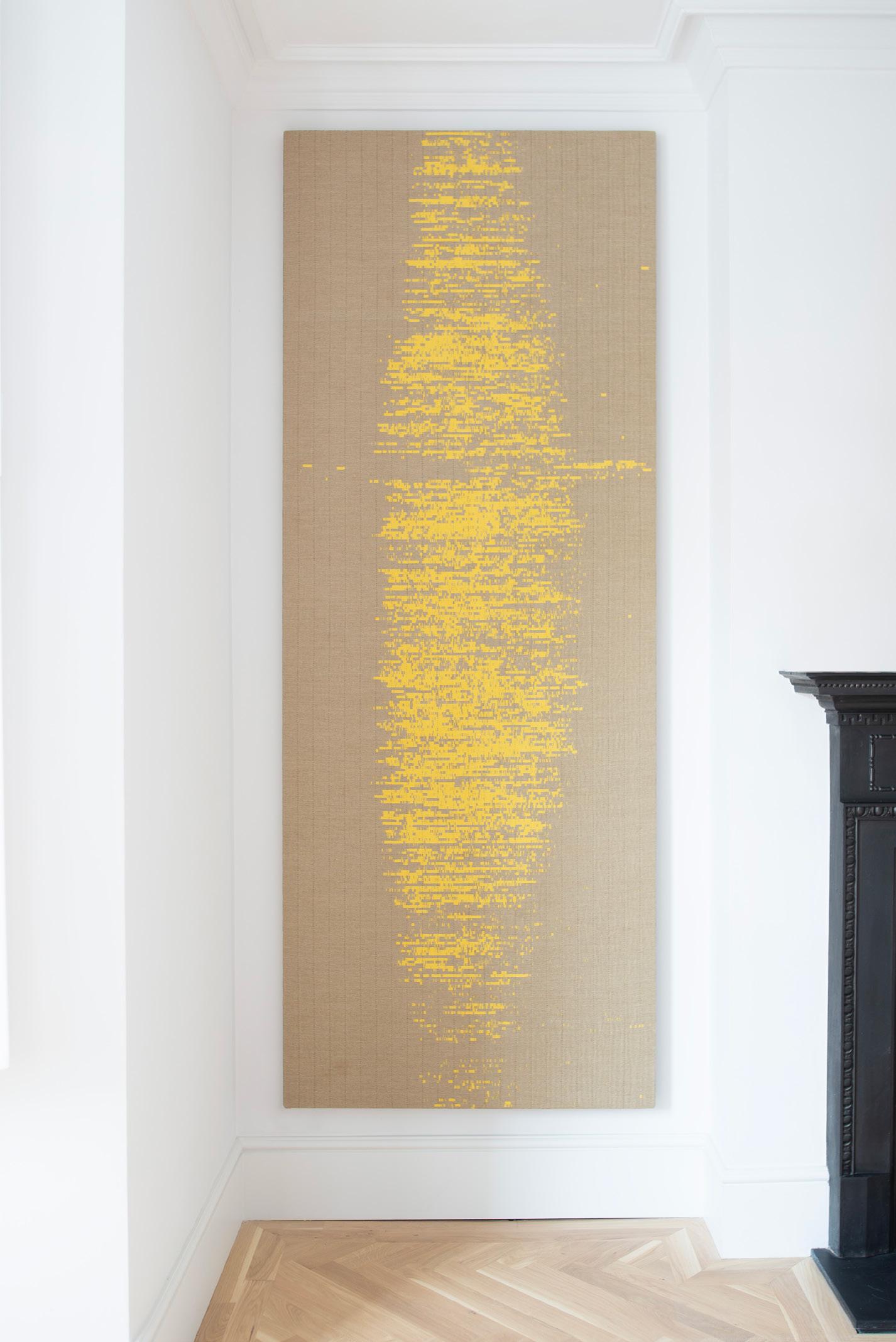
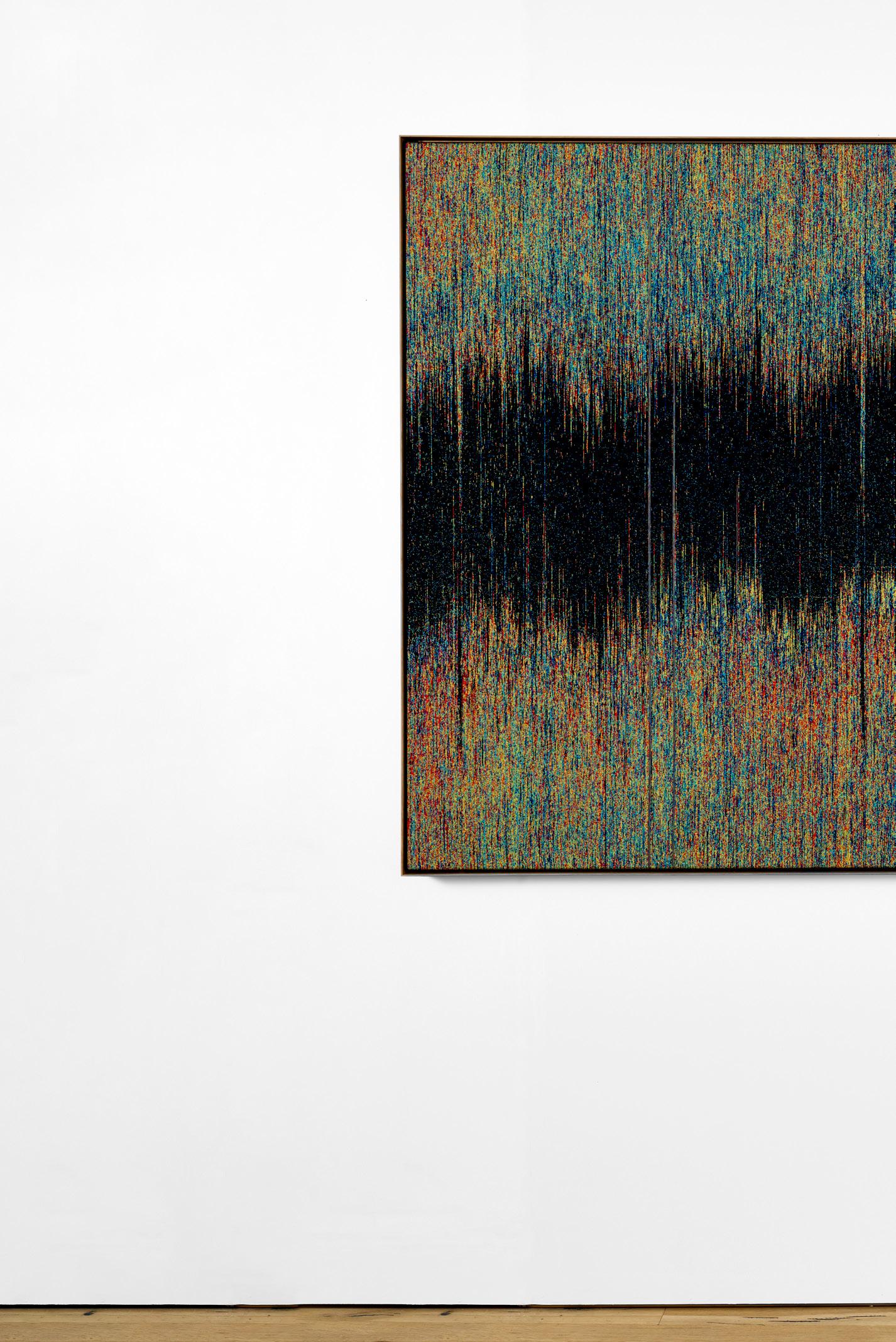
Susan Morris
SunDial: NightWatch_Sleep/Wake 2010-2014 (MLS Version), 2015
Jacquard tapestry, Silk and cotton yarn
Edition 2 of 3 (+ 2AP)
134 × 178.5 cm
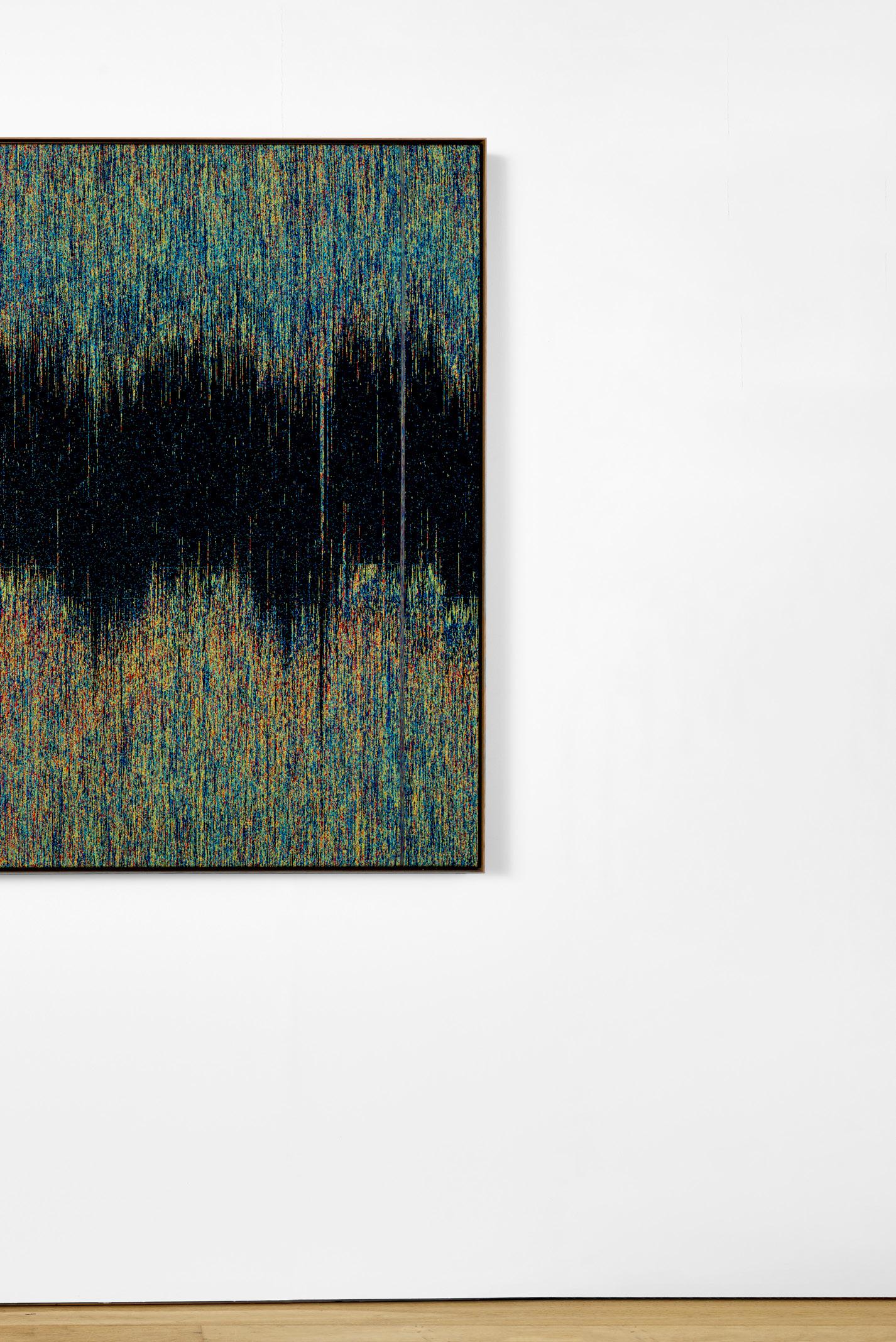


Devi is the multi-faceted Great Goddess, or Mother Goddess, representing female energy or power (Shakti) in many different guises. She may be personified, for example, as the gentle deity Uma, representing beauty, benevolence and light, or as one of the two terrifying warriors Durga and Kali, famous for slaying many evil demons and therefore signifying a much wilder, darker feminine power. Devi is perhaps best known in the guise of Durga, riding a lion, with her many arms holding an array of lethal weapons, and defeating the buffalo demon Mahisa by chopping off his head. Devi is worshipped across India. She is seen as a nurturing mother figure, closely associated with the land, and considered the protectress of local villages. She is also revered as a symbol of cosmic energy, representing the force that both creates and destroys worlds. At the base of the figure here, Devi’s sons Kumaara and Ganesha are shown on opposite sides.
Exhibited :
Gods and Goddesses of India, Lowe Art Museum, University of Miami, 1 December 1984–12 April 1985
Change and Continuity: Folk and Tribal Art of India, Lowe Art Museum, University of Miami, 31 January–28 March 2004
Published :
Brian Dursum, Change and Continuity: Folk and Tribal Art of India, Lowe Art Museum, University of Miami, 2004, page 27, number 35
Provenance : Leo Figiel, USA, since the early 1970s Private collection, Europe
Devi as a cosmic form
Gujarat, India, circa 14th century
Copper alloy with silver, gold, copper and ruby inlay
Height: 31.8 cm

A lingam is an ancient symbol of Lord Shiva in Hinduism, representing his formless, cosmic presence. The archaic, rough stone lingams often predate the more polished versions and is found as a naturally weathered, uncarved stone, reflecting its primordial origins. These lingams, often irregular and rugged in shape, are believed to embody the raw, untamed energy of Shiva in his earliest forms of worship. Such lingams, sometimes found in sacred groves or ancient temples, evoke the primal connection between the divine and the natural world, symbolizing Shiva’s timeless, transcendent power.
Stone Lingam
India, age unknown
29 × ø 16 cm
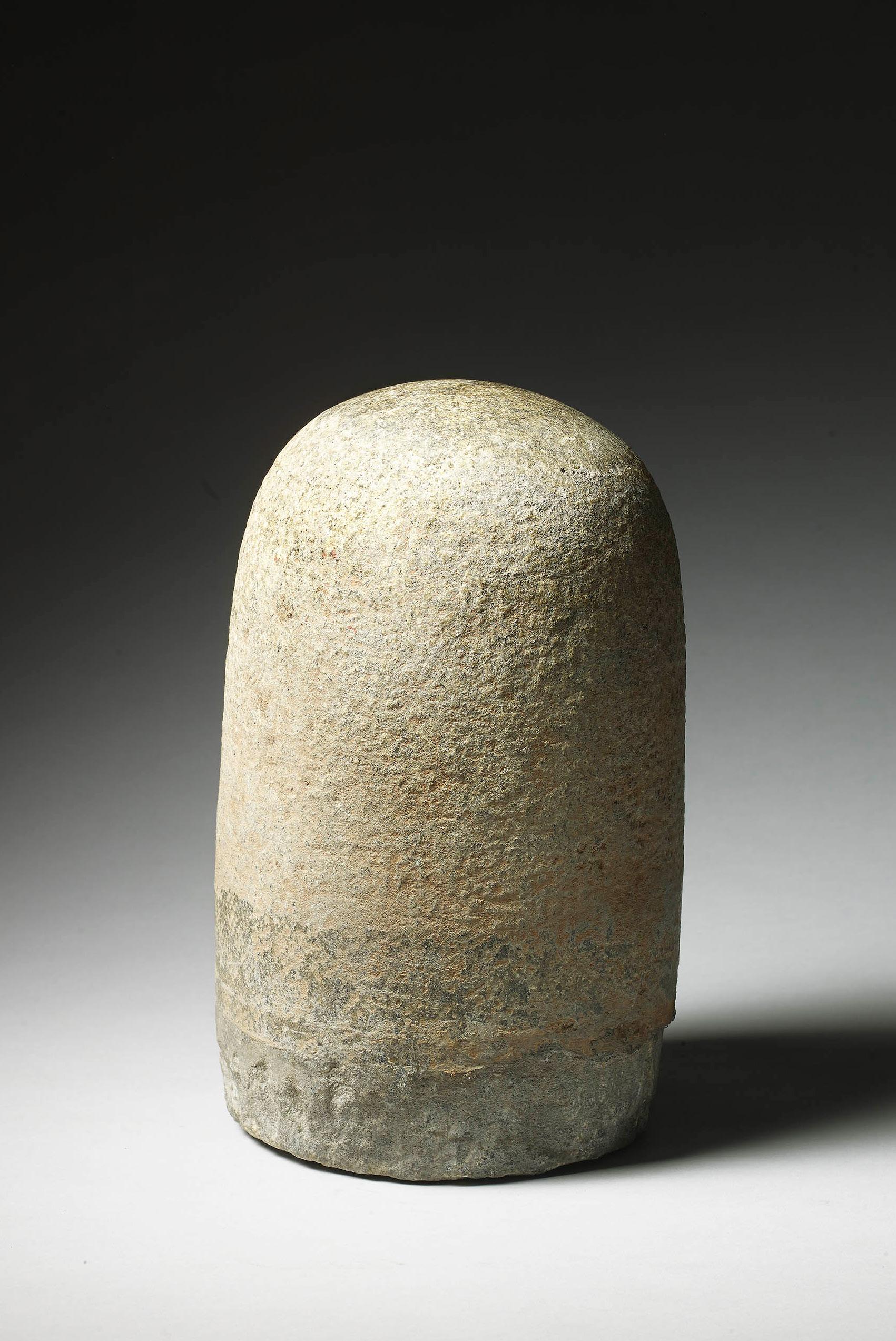
Hadi Tabatabai’s practice evolves from an exploration of the aesthetic possibilities offered by repetition and precision. The works often teeter on the edge between painting and sculpture. Embracing the formal aesthetic of American minimalism these reliefs, conceived of string, paint and a variety of supports, encompass a haptic quality often missing in hard-edged abstraction.
In 2003 Hadi Tabatabai visited Agnes Martin at her home in New Mexico. During his visit, Tabatabai asked Martin if she thought perfection, beauty, and reality were one and the same. Upon reflection, Martin countered that they are different, but there is a place where all three come together.
Hadi Tabatabai, born in Mashad, Iran, in 1964 The artist lives and works in San Francisco, USA
Hadi Tabatabai
Thread Painting 2021-6, 2021
Thread and acrylic paint and aluminium on Dibond panel
90 × 85 × 3 cm
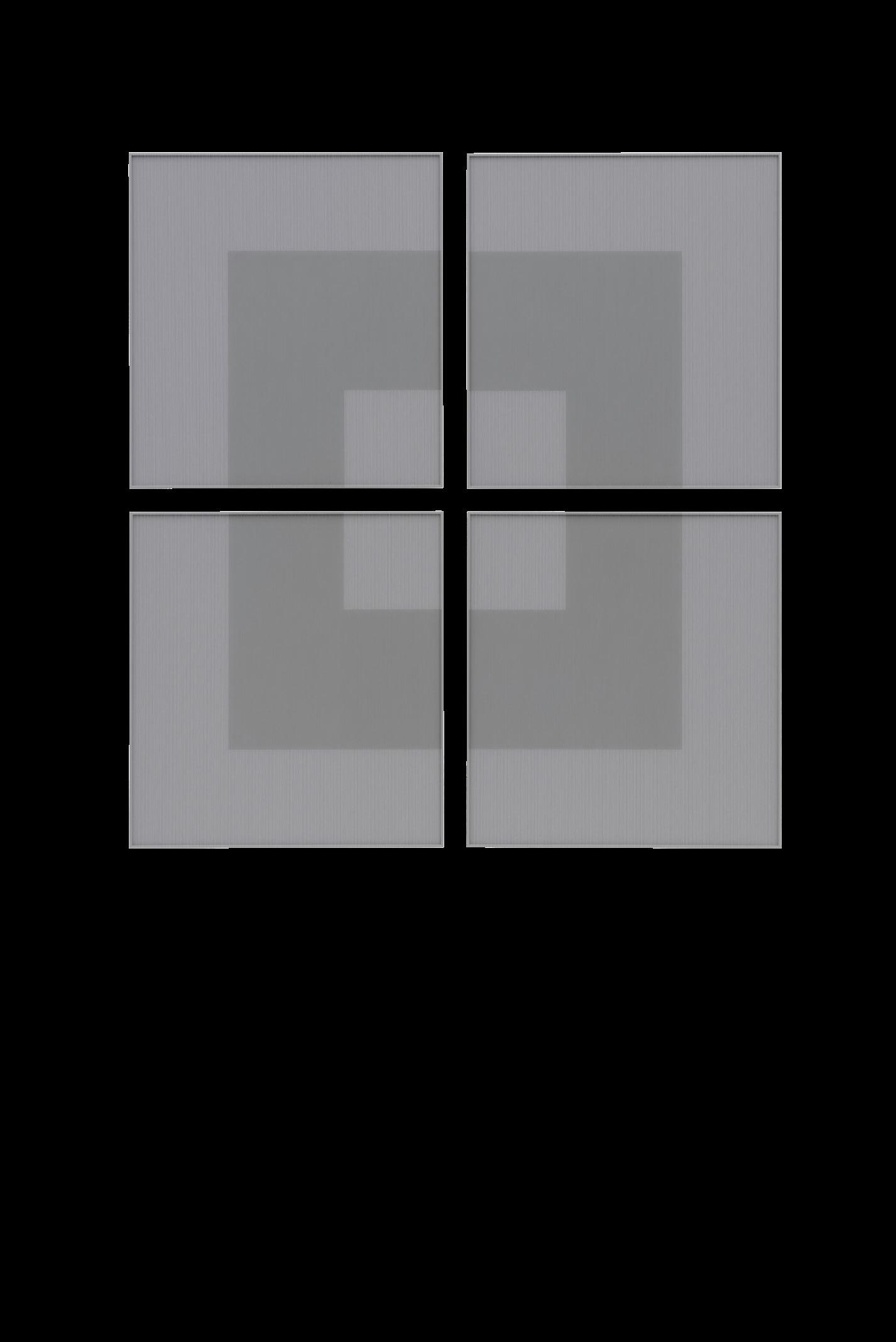
Thread Painting 2020-5, 2020
Thread and acrylic paint and ABS on Dibond panel
61.3 × 54.9 × 2.9 cm


Thread Painting 2021-7 + 2021-8, 2021
Thread and acrylic paint, rare earth magnets and aluminium
Each 34.9 × 32.4 × 3.2 cm


Yantra to subjugate, formed of cryptic mantra syllables in order to conceal its significance from the uninitiated Rajasthan, India, 18th century
Ink and colour on paper
16 × 21 cm

29 × 40.5 cm
This painting represents the cosmos as a form of Devi. Devi is the multi-faceted Great Goddess, or Mother Goddess, representing female energy or power (Shakti) in many different guises. It is not immediately clear in what form she is represented here. She is standing within an Oval, representing the cosmos which is thought to be egg shaped. Her right hand is in the gyan mudra, the ‘gesture of knowledge’, her left hand holds the padma (the lotus flower). She is standing on Vishnu, the preserver and god of light and enlightenment, who Himself is lying down in the cosmic ocean on his serpent, Ananta Seshanaga
This painting is comparable to the Jain cosmos images Within the Goddess we can see the names of the cosmic features such as Jambudwipa and the other islands and oceans as well as some of their measurements.
The Cosmos as a Devi Nepal, 18th century
Gouache on cloth
130 × 87 cm
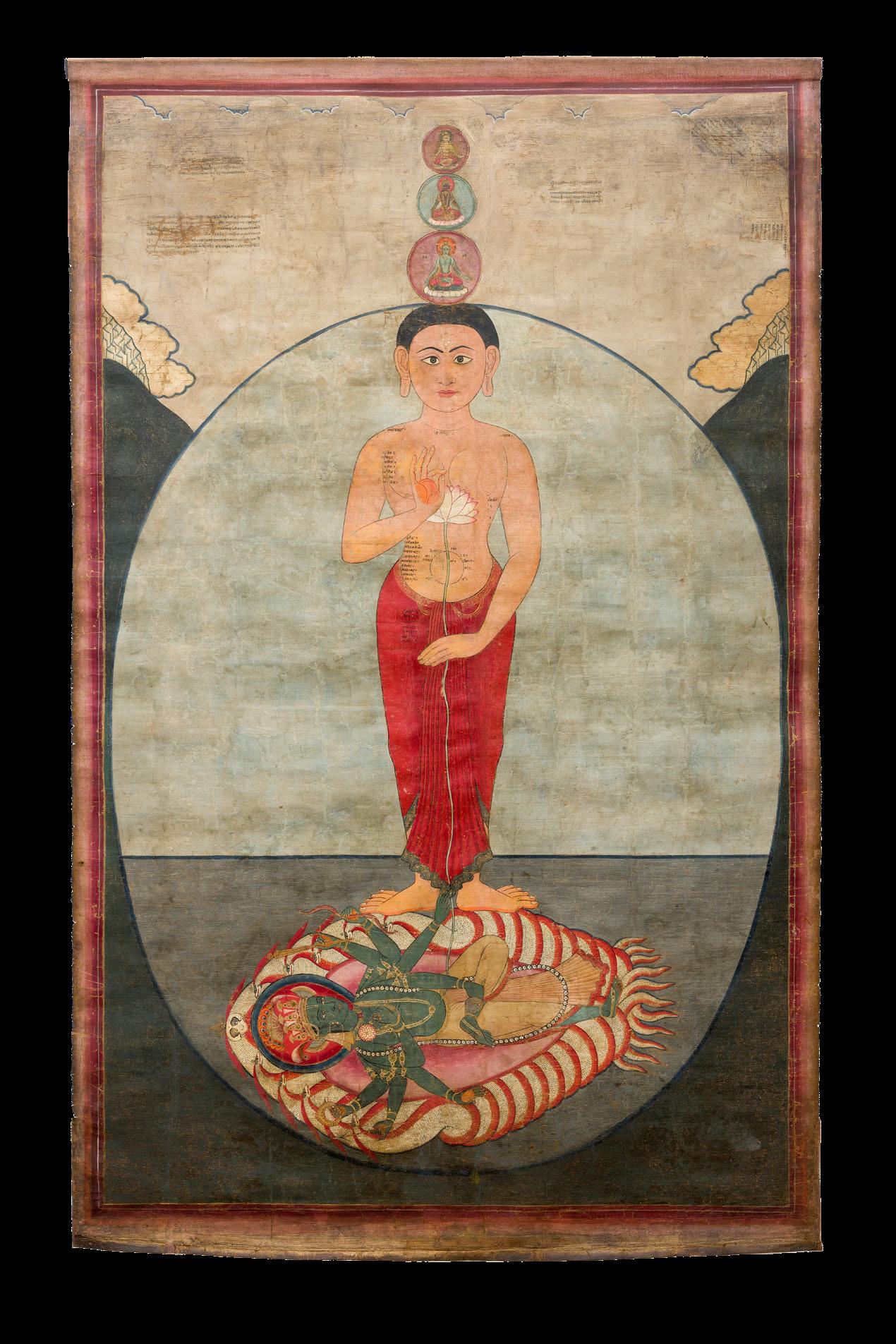
Stephan Baumkötter ’s paintings and drawings affect the substantiality of the art and the representation of a reality. They possess a poetic value, which simultaneously lends intensity to his abstractions. The only way these works can be experienced is through the medium of drawing, and this is the only way they should be experienced. Baumkötter’s works enable us to free ourselves of identifying vision. They release us from the need to recognise in an everyday sense, i.e. they remove the basis for any identifying vision bound to conceptual classifications, thwarting from the onset any possibility for verbal approach because they possess a pictorial quality resistant to any naming.
Stephan Baumkötter, born 1958 in Münster, Germany. The artist lives and works in Cologne, Germany.
Stephan Baumkötter
Untitled (2021-9W), 2021
Pastel on wood
32 × 24 cm


Stephan Baumkötter
Untitled (2021-8W and 2021-18W), 2021
Pastel on wood
Each 32 × 24 cm

Art Cologne
Booth C-130, Hall 11.1.
November 7 - 10, 2024
Copyright:
The artists, Bartha Contemporary Ltd. and Joost van den Bergh Ltd.
Joost van den Bergh
+44 77 6803 8384
Daniela von Bartha
+44 79 8464 9814
Niklas von Bartha
+44 79 4963 6527
One Princes Place, St. James’s, London SW1Y 6DE, United Kingdom
joost@joostvandenbergh.com
Top Detail: Adhaidvipa (Jain cosmological map) Gujarat or Rajasthan, India, 19th century
Bottom Detail: Stephan Baumkötter Untitled (2021-18W), 2021
7 Ledbury Mews North, Notting Hill, London W11 2AF, United Kingdom
info@barthacontemporary.com
barthacontemporary.com

